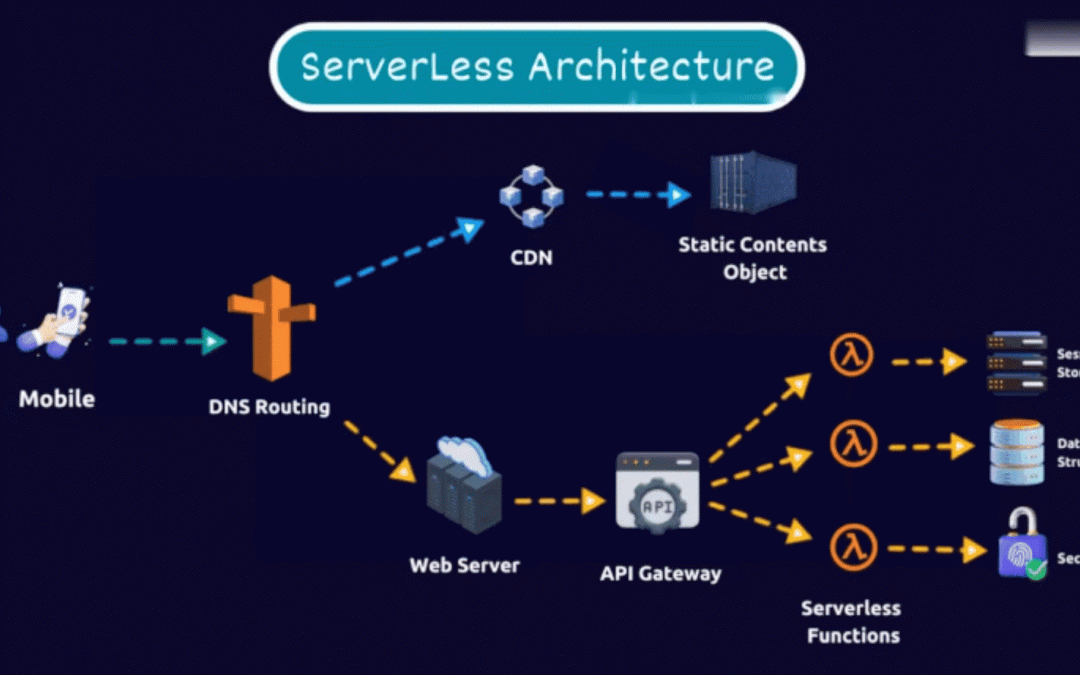Demystifying Serverless Architecture: A Comprehensive Guide
In the realm of modern computing, Serverless Architecture stands out as a revolutionary paradigm shift. This guide elucidates the intricate workings and benefits of Serverless Architecture, empowering both seasoned technologists and novices to comprehend its nuances.
Understanding Serverless Architecture:
Serverless architecture fundamentally eliminates the need for traditional server management. Instead, it operates on ephemeral containers that spring into action as required, revolutionizing application deployment and scalability.
Components of Serverless Architecture:
- Users: The driving force behind any application, whether they engage through mobile devices or computers.
- DNS Routing: Guides user requests to designated areas within the serverless setup.
- Web Server: Processes user requests sans the necessity of a conventional server.
- API Gateway: Serves as an intermediary between user applications and functional components.
- CDN: Facilitates the swift delivery of static content like images and videos.
- Serverless Functions: Small, specialized pieces of code that execute specific tasks.
- Data Structure: Various methods to store and organize data securely.
- Security: Ensures app integrity and safeguards against unauthorized access.
- Session Store: Securely preserves user session data.
Advantages of Serverless Architecture:
- Scalability: Accommodates increased user loads effortlessly, sans manual intervention.
- Cost-Efficiency: Operates on a pay-as-you-go model, eliminating expenditure on idle servers.
- Rapid Development: Liberates developers to focus on innovation, unencumbered by server management.
- High Availability: Ensures uninterrupted service delivery, even in the event of system failures.
- Flexibility: Allows for the utilization of diverse tools and languages tailored to project requirements.
Best Practices:
- Break Things Down: Decompose applications into modular components to enhance efficiency.
- Go with the Flow: Design applications to respond to events, enhancing agility.
- Test Everything: Thoroughly vet applications to ensure functionality and reliability.
- Keep an Eye Out: Employ robust monitoring and logging mechanisms to track performance and troubleshoot issues.
- Stay Safe: Implement stringent security measures to fortify applications against threats.
In essence, mastering Serverless Architecture heralds a new era of computing efficiency and agility. By embracing its principles and leveraging its capabilities, organizations can navigate the complexities of modern application development with unparalleled ease and efficiency
Keep visiting QuickShare and write to us in the comments below.

